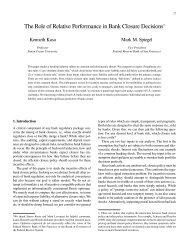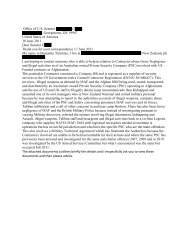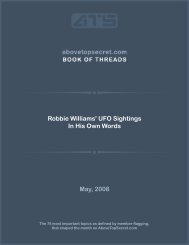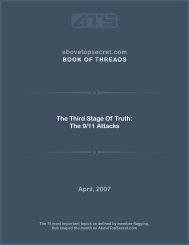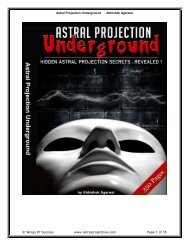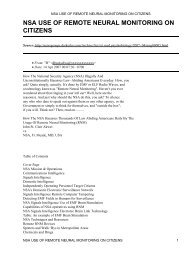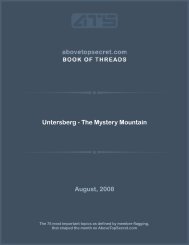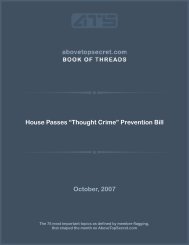saw that they had made a grin, he himself made two."What was the meaning <strong>of</strong> your grinning at us?" said the amhusg."What was the meaning <strong>of</strong> your grinning at me?" said Conall. Said they, "Our grinning atthee meant that thy fresh royal blood will be ours to quench our thirst, and thy fresh royalflesh to polish our teeth." And, said Conall, "The meaning <strong>of</strong> my grinning is, that I will lookout for the one with the biggest knob and slenderest shanks, and knock out the brains <strong>of</strong> therest with that one, and his brains with the knobs <strong>of</strong> the rest."Evidently, the little men <strong>of</strong> that particular time and place had not yet invented their paralyzing ray!The tale <strong>of</strong> Conall Gulban, recorded by Campbell <strong>of</strong> Islay in West Highland Tales, continues withmany wonderful fights in other lands. In France, for example, Conall wins in the same absurd wayover "the house <strong>of</strong> the Tamhaisg, the best warriors that the King <strong>of</strong> France had." MacRitchieconcluded:It is <strong>of</strong> course to be understood that the passage as it stands is as impossible as it isludicrous. But this does not interfere with the assumption that the basis <strong>of</strong> the story may bean actual encounter between men <strong>of</strong> tall stature and a race <strong>of</strong> dwarfs; the excessive number<strong>of</strong> the latter, and the ease with which the hero swings them about, being merely theembroidering <strong>of</strong> tale-tellers in later times.As for the seeming impossibility that a tale could be transmitted for fifteen centuries and yet behistorical, MacRitchie adds:It ought to be remembered that the oral transmission <strong>of</strong> history and genealogy, with the mostcareful attention to language and details, was a perfect science among the Gaelic-speakingpeoples.But, then, what became <strong>of</strong> the dwarfish race? According to MacRitchie in Scots Lore (1895), thedwarfs were destroyed or went into hiding toward the sixth century, when Columba and hisfollowers carried on a religious war against the Picts. At the same time, he says, the Irishmen werealso using force against the same people in the north <strong>of</strong> Ireland. And since the new owners <strong>of</strong> theland felt for their ancient enemies a mixture <strong>of</strong> guilt and fear, numerous rumors were bornconcerning the ghosts <strong>of</strong> the Picts, still roaming through the land. And this in turn led to the elvesand fairies. This theory – generally referred to as the "pygmie theory" – is no longer tenable in theface <strong>of</strong> the evidence historians have gathered about the Picts.The name "Picti," according to Wainwright in The Problem <strong>of</strong> the Picts (1955), appears first in 297A.D., and from that time on, it is applied to all the peoples who lived north <strong>of</strong> the Antonine Walland were not Scots. We are really concerned with the predecessors <strong>of</strong> the Picts, who formed variousgroups called "Proto-Picts." Could MacRitchie's pygmies have figured among the Proto-Picts?Should we believe that, among the Proto-Picts, there were dwarfs who were mistaken for a nativepeople? And, then, where did they come from? MacRitchie's theory <strong>of</strong>fers only confusion, and it isamusing to observe his embarrassment when he must report that the Fenlanders were not onlydwarfish, but black, too. Could it be that there were ikals in Northern Europe at the dawn <strong>of</strong>recorded history?In his conclusion to his discussion <strong>of</strong> the pygmie theory, which he rejects as Hartland does, Evans-Wentz remarks that it leaves all the problems <strong>of</strong> the historical origins <strong>of</strong> the fairy-faith unsolved,since it is clearly global, not limited to the Celtic lands. Thus A. Lang, in his introduction to the1922 edition <strong>of</strong> Kirk's book, states that "to my mind at least, the subterranean inhabitants <strong>of</strong> Mr.Kirks's book are not so much a traditional recollection <strong>of</strong> a real dwarfish race living underground (ahypothesis <strong>of</strong> Sir Walter Scott's) as a lingering memory <strong>of</strong> the chthonian beings, the Ancestors."
Folklore in the MakingNo matter how interesting it may be to speculate on the origin <strong>of</strong> these ancient beliefs, theopportunity to observe folklore in the making is even more attractive. When modern rumors fallinto the very same patterns that have puzzled generations <strong>of</strong> scientists, theologians, and literaryscholars, the feeling one gets is a mixture <strong>of</strong> wonder and delight. When the phone rings in WrightPatterson Air Force Base and a local intelligence <strong>of</strong>fice transmits the observation <strong>of</strong> a motorist whohas just seen what he describes as a flying saucer with strange hairy dwarfs on the side <strong>of</strong> the road,we are witnessing the unique conjunction <strong>of</strong> the modern world – with its technology – and ancientterrors with all the power <strong>of</strong> their sudden, fugitive, irrational nature. We are in a very privelegedposition. Neither Evans-Wentz nor Hartland was able to interview people who had just observed thephenomena they studied. Most <strong>of</strong> their witnesses spoke <strong>of</strong> days gone by, <strong>of</strong> stories heard by thefireplace. In contrast, we feel that we can almost reach out into the night and grab those lurkingentities. We are hot on their trail; the air is still vibrating with excitement, the smell <strong>of</strong> sulphur isstill there when the story is recorded.Take, for instance, the story <strong>of</strong> the Air Force colonel who was driving at night on a lonely Illinoisroad when he noticed a strange object was flying above his car. It looked, he said, like a bird, but itwas the size <strong>of</strong> a small airplane. It flapped its wings and flew away. This is the type <strong>of</strong> horror storyadolescents sometimes tell when they come home late and a bit nervous. But an Air Force colonel?During November and December, 1966, West Virginia was plagued by a similar "bird," called "theMothman" by imaginative reporters. One witness, twenty-five-year-old Thomas Ury, who lives inClarksburg, met the creature at 7:15 A.M., on November 25, 1966, in the vicinity <strong>of</strong> Point Pleasant.It was a large gray thing that rose from a nearby field. "It came up like a helicopter and veered overmy car," Ury told American researcher John Keel, a dedicated investigator who spent many days inthe area analyzing the reports. Ury accelerated up to 75 m.p.h., but the "bird" was still there,casually circling the car. It appeared to be about six feet long, with a wingspread <strong>of</strong> eight to ten feet.According to other witnesses quoted by Keel, the figure had large, round, glowing red eyes.On January 11, 1967, Mrs. McDaniel saw the "Bird" herself in broad daylight. She wasoutside her home when she observed what appeared to be a small plane flying down the roadalmost at tree-top level. As it drew close she realized it was a man-shaped object with wings.It swooped low over her head and circled a nearby restaurant before going out <strong>of</strong> sight.Mrs. McDaniel is known in the community as a rational and responsible person.Now consider this report:The intruder was tall, thin and powerful. He had a prominent nose, and bony fingers <strong>of</strong>immense power which resembled claws. He was incredibly agile. He wore a long, flowingcloak, <strong>of</strong> the sort affected by opera-goers, soldiers and strolling actors. On his head was atall, metallic-seeming helmet. Beneath the cloak were close-fitting garments <strong>of</strong> someglittering material like oilskin or metal mesh. There was a lamp strapped to his chest. Oddest<strong>of</strong> all: the creature's ears were cropped or pointed like those <strong>of</strong> an animal.Was it a prankster in Batman dress? It seems entirely possible, especially when we take into accountthe fact that the "bird" was carrying something on its back and made incredible leaps – actuallyflying on one occasion. There is only one trouble with this explanation: the latter episode took placenot in West Virginia in 1966 but in the dark lanes <strong>of</strong> a London suburb in November 1837. Like theMothman <strong>of</strong> Point Pleasant, the mysterious flying man <strong>of</strong> London was ignored by authorities aslong as possible. Finally, a resident <strong>of</strong> Peckham wrote a letter to the Lord Mayor, and the censorshipcould no longer be maintained. Nightly, horse patrols searched the countryside; Admiral Codringtonset up a reward fund (still unclaimed, by the way). And J. Vyner, in a remarkable article about themystery, informs us that even "The old Duke <strong>of</strong> Wellington himself set holsters at his saddle bow
- Page 3 and 4:
Foreword by Whitley StrieberThere a
- Page 5 and 6: It is sad that, as the twentieth ce
- Page 7 and 8: PART ONE: THE ALIEN CHRONICLESIn th
- Page 9 and 10: lot about it, but nobody said 'Let'
- Page 11 and 12: The resemblance of the Dogu statues
- Page 13: various forms of error worship unde
- Page 16 and 17: them. These apparitions are scarce,
- Page 18 and 19: was again shot at. Another creature
- Page 20 and 21: The story is fantastic. Yet it remi
- Page 22 and 23: their virginity in the sanctuaries
- Page 24 and 25: A letter from a British woman begin
- Page 26 and 27: The recollections of the legionnair
- Page 28 and 29: lades. In less time than it takes t
- Page 30 and 31: e called Smith said: "No, we cannot
- Page 32 and 33: Celtic legends, along with the docu
- Page 34 and 35: probably took place in the second p
- Page 36 and 37: Australian Air Force Intelligence p
- Page 38 and 39: ings in the fields and prairies?One
- Page 40 and 41: From behind the object, two beings
- Page 42 and 43: "in smooth English." They did not s
- Page 44 and 45: to four feet tall, dressed in white
- Page 46 and 47: expectations as if they were mere t
- Page 48 and 49: came out of it, but this person was
- Page 50 and 51: 6. When men did not inhabit most of
- Page 52 and 53: the negative reactions of scientist
- Page 54 and 55: other in appearance, dress, mode of
- Page 58 and 59: and rode out after dark in search o
- Page 60 and 61: sighting, and the Sonny Desvergers
- Page 62 and 63: PART TWO: ANOTHER REALITYDuring the
- Page 64 and 65: pencil in a buttonhole with a piece
- Page 66 and 67: short perpendicular line on each en
- Page 68 and 69: sudden displacement of warm air or
- Page 70 and 71: popular today. But a second - and e
- Page 72 and 73: ecorded about 1825 in the Vale of N
- Page 74 and 75: The ikal of the Tzotzils flies thro
- Page 76 and 77: the door, he turned and recieved a
- Page 78 and 79: If Stewart came back today, he woul
- Page 80 and 81: The devil does not have a body. The
- Page 82 and 83: interested in the social implicatio
- Page 84 and 85: Very well, little son. Come back to
- Page 86 and 87: measure. But the phenomenon does ap
- Page 88 and 89: and physical, to determine whether
- Page 90 and 91: previous year. But the fact remains
- Page 92 and 93: Do Not Report This!Accounts such as
- Page 94 and 95: least one occasion, experienced lev
- Page 96 and 97: deep unconscious level of the symbo
- Page 98 and 99: much as twenty hours a day, and in
- Page 100 and 101: against me as I stood bracing mysel
- Page 102 and 103: another one, but this was very defi
- Page 104 and 105: not natural, was witnessed by perso
- Page 106 and 107:
The predicted miracle took place as
- Page 108 and 109:
The phenomenon, it seems, could not
- Page 110 and 111:
in the final analysis.Many of us wi
- Page 112 and 113:
already surrounded....I was told wh
- Page 114 and 115:
Since the publication of my earlier
- Page 116 and 117:
”A bright flash”Fatima, May 13,
- Page 118 and 119:
The Invisible CollegeAfter some thi
- Page 120 and 121:
the Air Force met in Dallas and dis
- Page 122 and 123:
panel of scientists could rapidly b
- Page 124 and 125:
it had been hovering there was now
- Page 126 and 127:
like piezo-electricity, or static e
- Page 128 and 129:
the group teachings and advice. The
- Page 130 and 131:
This is a frightening view, one tha
- Page 132 and 133:
John McCoy, who coauthored with Wil
- Page 134 and 135:
of reports about "the robots" and "
- Page 136 and 137:
eathe our air. They walked normally
- Page 138 and 139:
the designation Wolf 424.The myster
- Page 140 and 141:
a scar or a mark. The authorities w
- Page 142 and 143:
esearches might have a bearing on a
- Page 144 and 145:
me undeniable) and as psychic devic
- Page 146 and 147:
extraterrestrial theory is not stra
- Page 148 and 149:
the universe summarizes the problem
- Page 150 and 151:
About the AuthorAn astrophysicist b



